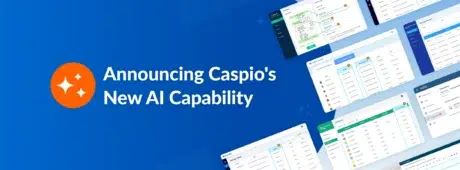All Systems Go: How to Prep Your Business for Full-Scale Low-Code Adoption
September 13, 2023

For today’s businesses, staying competitive means going digital. There’s no denying the massive advantage that low-code development can bring to organizations. However, adopting low code across the board is easier said than done. It requires careful planning, execution and monitoring to ensure its successful integration into your existing framework.
In this article, we will delve into the essential steps you need to take to prepare your organization for a comprehensive low-code adoption.
Board the Low-Code Express
Subscribing to a low-code platform is just one stop in the journey – and not even the first one. To effectively adopt low code into your organization, you must set the groundwork.
Build the Foundation
Implementing a new system across the entire business can be daunting and logistically difficult. To ease this transition, start with a single, small pilot project and do a trial run. Choose one that best aligns with your organization’s goals and, ideally, has the potential for greater impact down the line. A well-executed pilot will not only show stakeholders the value of low code for the business but also serve as a blueprint for future initiatives.
If you don’t have a specific project in mind yet, you can look at the process flows of your organization’s departments (e.g., sales, customer support, operations, etc.) and see how custom apps can improve their systems through automation, data analytics, or others.
Align Management and Gain Support
The journey toward organization-wide low-code adoption requires support from the top. For the initiative to succeed, C-suite leaders and decision-makers must be on the same page and understand the potential benefits and challenges.
Clearly communicate your plan for low-code adoption. Delineate its timelines, advantages, risks, expected outcomes and required support or intervention. Garnering management support will ensure adequate resources are allocated and the organization’s vision is consistently communicated.
Incentivize the IT Department
Positioning low-code adoption as an opportunity rather than a threat is crucial to winning over your IT department.
Highlight how low code can free up developers to focus on more complex tasks and innovations. Share success stories of how other IT departments integrated low code into their workflows and significantly boosted their efficiency. Give tangible incentives, whenever possible, like sponsored training opportunities, flexible work arrangements or even bonuses for successful low-code integration. Your IT department will be invaluable in your efforts, so it’s crucial to get their buy-in.
Establish a Task Force
The success of low-code adoption across the board hinges on cross-functional collaboration. Establish a task force that will execute and monitor the process, comprised of representatives from IT, development, business and operations. They will be responsible for steering the strategic direction of the initiative, ensuring everything aligns with business objectives, tracking its progress, troubleshooting when necessary and making recommendations for future endeavors.
Define roles clearly and set firm expectations around the task force. Given the additional workload involved, it’s important that members of the group are fully aware of their responsibilities and that their teams and managers are properly notified.
Prep the People
Despite being easier to learn than traditional coding, low-code development still requires a learning curve. Equipping your app developers with the necessary skills and knowledge allows them to fully leverage the new tools and systems. Vendor onboarding programs and training that cover platform features, best practices and real-world cases will empower your team to create robust applications on their own later.
When shopping for a low-code provider, look for one that offers dedicated onboarding and training sessions. Expert coaching can help people learn faster, especially those with little to no background in app development.
Implement an Incremental Progress and Feedback Loop
Incremental development is the key to a smooth low-code journey. Instead of aiming for grand unveilings, opt for a phased approach. Release small iterations and gather feedback as you go. The iterative process allows you to fine-tune your strategy based on real-world results rather than getting hung up on forecasts and predictions.
The smaller scale also minimizes risks, makes it easier to manage user needs, promotes flexibility and delivers faster time-to-value compared to a bigger release.
Get Assistance from the Vendor
Your first project will set the tone for future initiatives so you want to make sure it will be fruitful. To keep it on time, on budget and delivering expected results, get help from your chosen low-code vendor. Once you start working on your low-code solutions, have the vendor review your apps’ data architecture, security, performance and UI/UX. It may require a small investment, but it will be money well spent.
Some low-code providers like Caspio also offer additional support to customers, such as project consultation and Professional Services, where expert developers directly help you build your apps.
Bring Low Code to Your Business
Embracing low-code development across the entire organization is a big undertaking that requires careful planning, commitment and collaboration. By starting with a pilot project, garnering management support, incentivizing developers, forming a dedicated task force, providing training, adopting an incremental development approach and enlisting the help of your chosen low-code vendor, you can set yourself up for a successful low-code adoption.
Caspio can help guide you through this process. Our expertise in the sector comes from over two decades of helping organizations across the world transform their business through app development. Connect with us today and discover how you can jumpstart your low-code journey and ensure a successful digital transformation.















